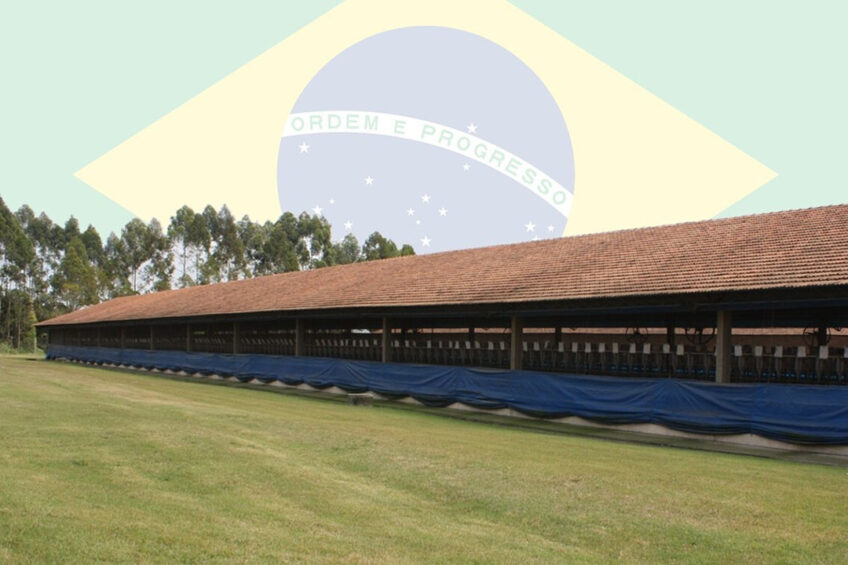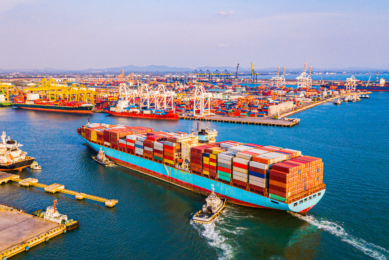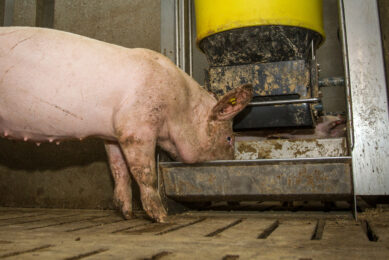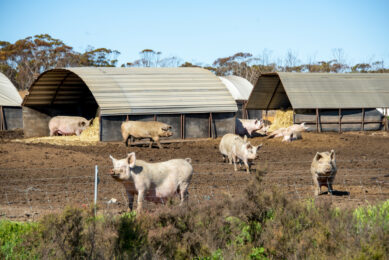Brazil close-up: How do pig farmers keep their costs low?

Year after year, Brazil has been improving its productive results inside farms and gaining ground on global pig market. That can be explained by a set of factors based on some pillars of farming and competitive advantages.
Pig Progress consulted with Embrapa Pig and Poultry, which is a division within Embrapa, the Brazilian Agricultural Research Corporation. In total, 5 experts shared their thoughts about the main pillars that made Brazil one of most competitive players in the sector worldwide. Read the explanations of researchers Jorge Ludke, Luiz Carlos Bordin, Dirceu Talamini, Elsio Figueiredo and Jean Souza.
Pig Progress: What are the main alternatives to reduce costs in pig nutrition?
Jorge Ludke: “Pig nutrition in Brazil is based on corn and soybean meal, which currently have high prices, plus complementary inputs to promote feed conversion. To reduce costs, there are 2 paths: The improvement of feed conversion and finding equivalent alternative ingredients. Pig production in Brazil is concentrated in the centre-south of the country. In the South region, depending on climate, there are alternative diets possible, such as the traditional American diet (corn and soy), European diet (using winter cereals) and Asian diet (includes rice and by-products).
For instance, rice production in Brazil takes place mainly in Rio Grande do Sul and Santa Catarina and, in certain periods, using husked rice to feed pigs is an option. Moreover, the southern region, also including Paraná, has 5 million ha available for cereal production during the winter. Therefore, new areas of wheat, barley and triticale are being encouraged and, depending on the price of corn, the production of these cereals will increase year by year.
In addition to the different grains, there are options to improve feed conversion. For example, processed ingredients for greater digestibility and reduced excretion of undigested components. In this sense, the grain granulometry is the first relevant aspect. The 2nd is the pre-digestion processing via moist heat in the presence of enzymes (carbohydrases, proteases and phytases) that can result in higher energy in diets. The greater availability of alternative electricity generation sources (wind energy, biogas and solar power) allows these processes on farms.”

What are innovations to optimise animal handling?
Elsio Figueiredo: “The evolution of handling in Brazilian commercial pig farming takes place through 6 pillars. The first is to separate production cycles into phases and “cores,” in order to specialise management and improve logistics. Most of the sectors in Brazil are being organised by production phase. That is, each farm or unit attends a stage, such as genetic multiplication, pregnancy, maternity, nursery and fattening up to slaughter age.
Another point is the standardisation of batches over all these phases. For example, both multiplication farms and piglet production farms group sows by age and farrowing cycle. In nurseries, piglets must have the same origin and health status as well age, size and sex, according to the physical space of the barn, availability of feeders and water fountains. The standardisation of batches continues until the slaughter weight (between 120 and 130 kg).

“The second pillar is to improve the facilities. There are several aspects of number and size of stalls, corridors and other structures until cleaning system, destination of effluent, residues and dead animals. Prefabricated sheds with reinforced concrete structure, roofs with thermal insulation, partitions, and specific floors for each phase/type of animal housed are usually used.”
Ludke: “Labour training and technical assistance are also fundamental. There is a strong interest from young producers in new digital technologies and farm management. Wide access to the internet allowed diffusion of technologies in animal production, including pig farming. Technical assistance in integrated production systems is in charge of the integrating company/cooperative. Non-integrated pig farmers receive support from the states’ rural extension systems.”
Figueiredo: “Another pillar is performance monitoring to measure food consumption, weight gain and other topics on a daily basis in order to record data in control systems connected to an operation centre.”
Jean Souza: “Innovations modernise facilities with partitions and floors, as well automatic silos, feeders and drinking fountains. In addition, the use of sensors and software already allows for real-time and remote control of management, handling and business.
Brazil’s pig industry is experiencing an innovation process in which production will create a “cyber-physical world”, combining intelligent systems, machines and humans.
Today we have 2 segments with regard to this transformation. The first concerns collecting and recording data. Potentially, any facility can have sensors, cameras and microphones to record various environmental indicators, animal behaviour and others. The second segment is the development of digital applications, which analyse, compare and interpret such data to guide machines or workers. These services already run as warning systems today. This transformation is progress and going to change Brazilian pig farming in the next 10 to 15 years.”
What about climate control inside pig houses? Are there new technologies in Brazil?
Figueiredo: “Climate control in Brazil’s pig farming has evolved from open facilities without temperature control, to facilities with controlling temperature, ventilation, humidity, gases and dust. This occurs through architectural projects, new construction materials and equipment for more comfort and well-being for animals and workers.”
Souza: “Discussions about ambience have given special emphasis to automation, production variables controlling and environments as comfortable as possible for the animals. Automation and control are innovations, which allow decision-making in real time.
“Another intense debate is related to the substitution of individual stalls by group housing of sows. There are already many alternatives and each company will adopt solutions to suit international animal welfare requirements.”

What is the path to adopt “preventive health”?
Luiz Carlos Bordin: “Preventive health focus on prophylactic measures, not just inside the farm. Comprehensive actions to mitigate risks related to re-emergence of infectious and contagious diseases are extremely important for that. Currently, African Swine Fever knocks at the door of America’s productive system. Thus, from the transport of products, by-products, food, people and especially animals, they must undergo thorough inspections to control any risks at country’s borders in ports, airports and quarantine zones.
Once inside farms, producers have to improve not only biosecurity in the sense of adopting physical measures and protocols to avoid the entry of diseases, but also to provide immunity to their herds and replace antimicrobials, for example. The adoption of cleaning and disinfection programmes, access limits, sanitary break and vaccination is undoubtedly an important tool. In other words, it is important to adopt a set of measures and procedures to prevent, control and limit animal exposure to pathogens.”
Figueiredo: “Communication, specifically for disease prevention, has been efficient in promoting rapid awareness in the production chain, under the coordination of the Ministry of Agriculture, Livestock and Supply.”

How about the purchasing of raw materials?
Dirceu Talamini: “Brazilian pig production takes place mainly through the integration between agro-industries (integrators) or cooperatives and producers. In this arrangement, integrator or cooperative carries out feed supply to producers. Companies generally are well-structured and are able to seek lowest prices from domestic suppliers or even through imports, mainly from Paraguay and Argentina. Fortunately, domestic consumption and pig exports are favourable, making possible to pass part of the increases to final consumers. Prices of raw materials are more critical for independent producers, who need to buy grains and other inputs in the market, facing, with some disadvantage, the competition of integrating companies.”











